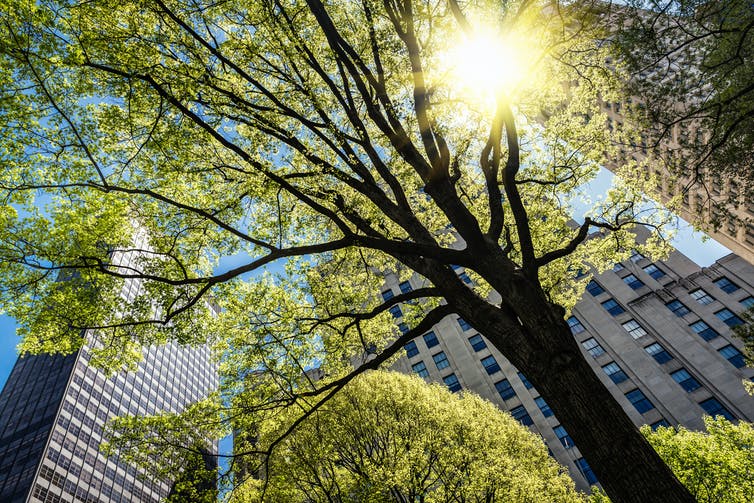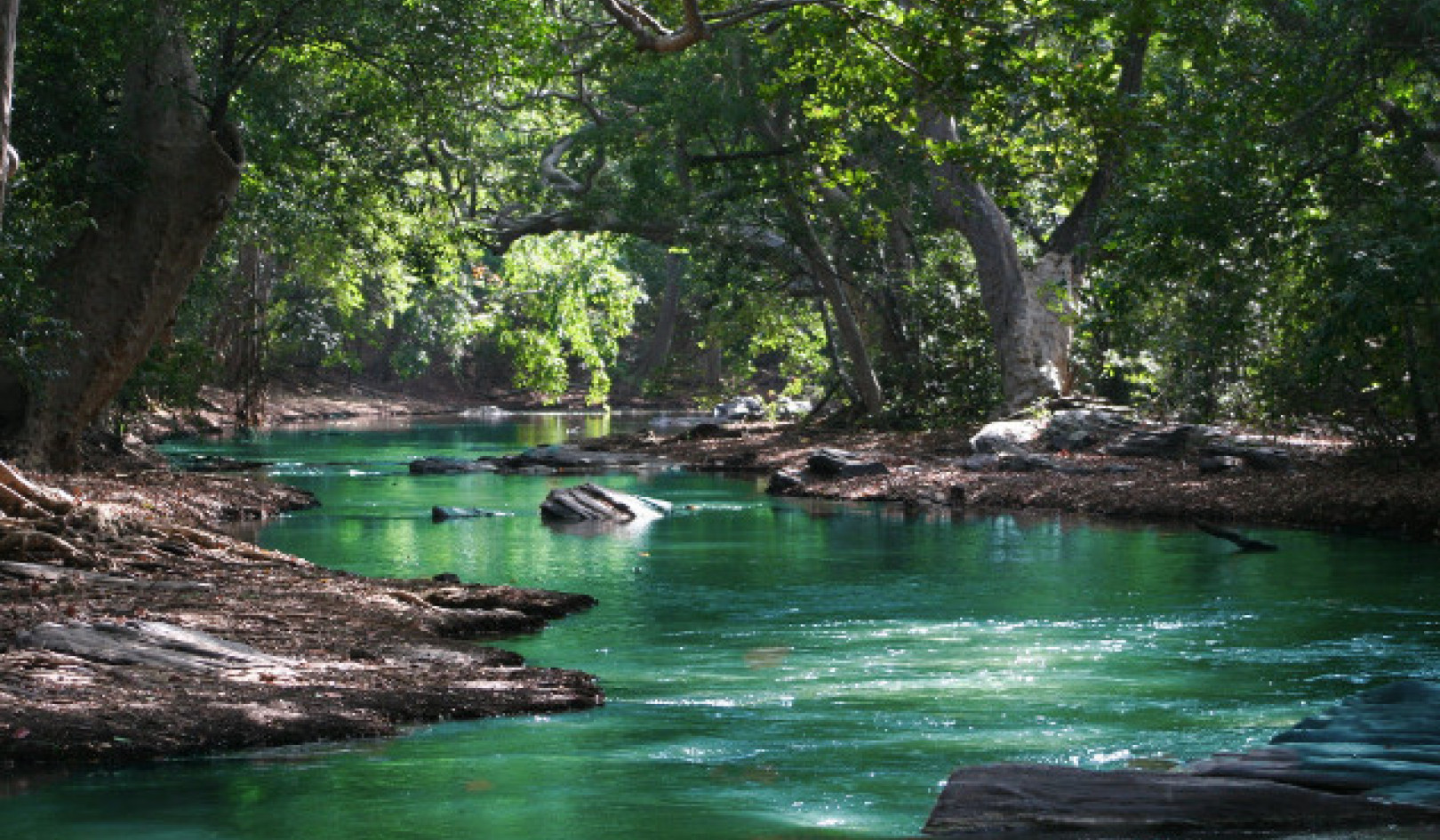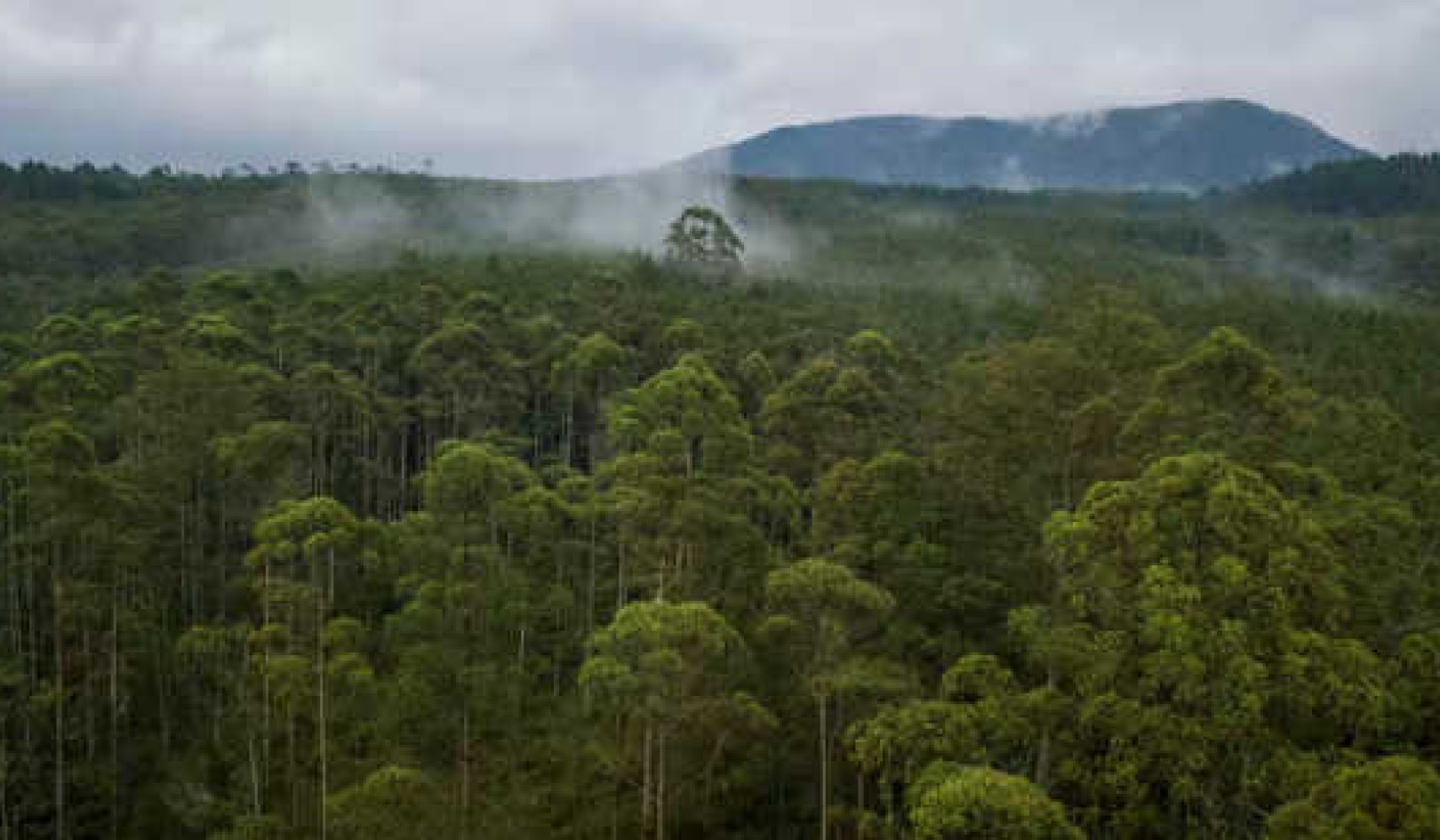The 21st century is the urban century. It has been forecast that urban areas across the world will have expanded by more than 2.5 billion people by 2050.
The scale and speed of urbanisation has created significant environmental and health problems for urban dwellers. These problems are often made worse by a lack of contact with the natural world.
With research group the Tree Urbanistas, I have been considering and debating how to solve these problems. By 2119, it is only through re-establishing contact with the natural world, particularly trees, that cities will be able to function, be viable and able to support their populations.
Future cities
The creation of urban forests will make cities worth living in, able to function and support their populations: Treetopias.
This re-design will include the planting of many more urban trees and other vegetation – and making use of new, more creative methods. Although we didn’t fully realise it at the time, the 1986 Hundertwasserhaus in Vienna, a building that incorporated 200 trees in its design, was the start of more creative urban forestry thinking.
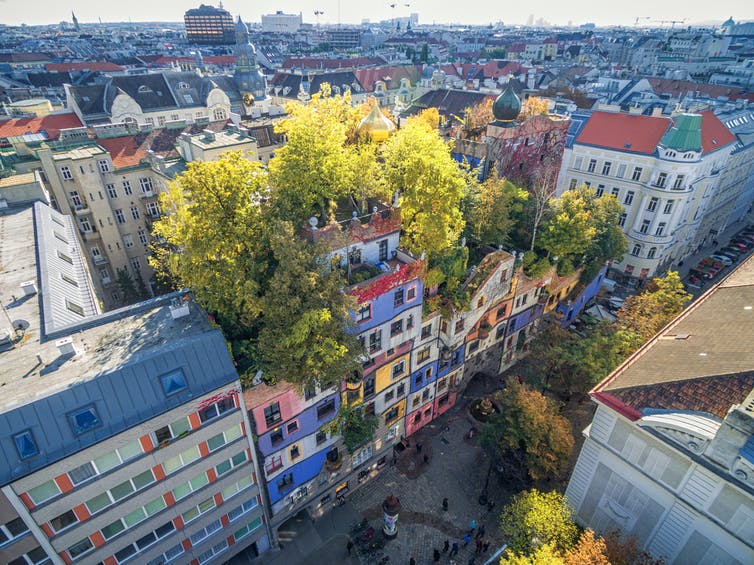 The Hundertwasserhaus in Vienna, designed by Friedensreich Hundertwasser. photosounds/Shutterstock
The Hundertwasserhaus in Vienna, designed by Friedensreich Hundertwasser. photosounds/Shutterstock
This has been carried on in Stefano Boeri’s Bosco Verticale apartments in downtown Milan, which incorporates over 800 trees as part of the building. Similar structures are being developed around the world, such as in Nanjing in China and Utrecht in The Netherlands.
The urban forest needs to be designed as a first principle, part of the critical infrastructure of the whole city, not just as a cosmetic afterthought. We know for example that in 2015, urban forest in the UK saved the NHS over £1 billion by helping to reduce the impact of air pollutants. In 2119, we may well look back on this present time as the equivalent of the Victorian slum.
Trees can create places which can greatly improve our health and well-being. Our urban forest can give us the spaces and places to help manage our mental health and improve our physical health. Research has indicated for example that increasing the canopy cover of a neighbourhood by 10% and creating safe, walkable places can reduce obesity by as much as 18%.
Cities built on trees
As rural areas become less productive as a result of climate change, cities – which previously consumed goods and services from a large hinterland – will have to become internally productive. Trees will be at the centre of that, contributing to the city energy balance through cooling, regulating and cleaning our air and water flows, and ensuring that our previously neglected urban soils function healthily.
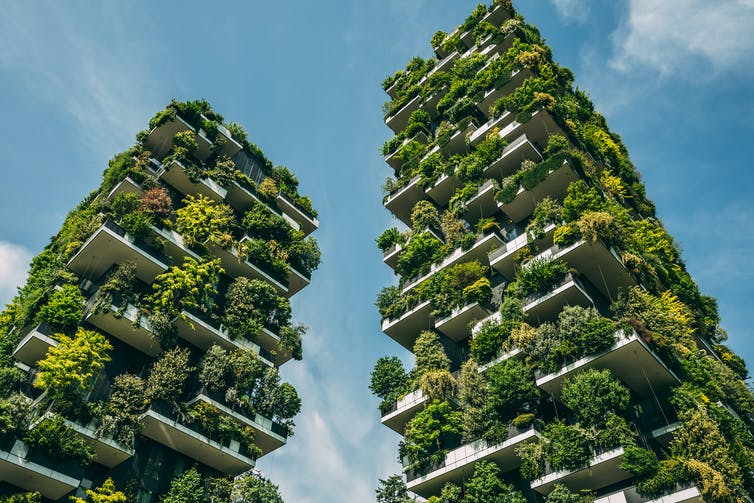 The Bosco Verticale (Vertical Forest) in Milan, designed by Stefano Boeri. Sabino Parente/Shutterstock
The Bosco Verticale (Vertical Forest) in Milan, designed by Stefano Boeri. Sabino Parente/Shutterstock
Urban forests could also provide timber for building. We have a history of productive woodlands in the UK, yet alternative construction materials and a growth in an urban population with less knowledge of forest management means that the urban forest is rarely viewed as productive. We are now recognising the potential productivity of the urban forest, as campaigns to stimulate homegrown timber markets and achieve more efficient management efficiencies are proving to be successful.
Furthermore, economic growth is still deemed to be the prime symbol of the effectiveness of a city, but we need to be equally aware of other invisible values. This will open up new approaches to governance. Governance needs to embrace all forms of value in a balanced way and facilitate a new vision, considering how trees can help create liveable cities.
New opportunities
As the urban population rises, we need to get better at understanding the breadth and diversity of the values held about our urban forest. Individual people can hold several distinct values at once, as urban forests may contribute to their wellbeing in different ways.
The current guardians of our urban forest, mainly local authority tree officers, spend much of their time managing risks rather than maximising the opportunities of trees. They often receive complaints about trees and tree management, and it can sometimes be difficult to remember that people do care about trees. We need to develop viable partnerships between tree managers, community members and businesses to support trees in our cities.
Although the canopy cover of cities worldwide is currently falling, this is not the case in Europe, where it is increasing. Many European countries are acknowledging the fact that we have over-designed our towns and cities to accommodate the car, and now it is time to reclaim the public realm for our people – either pedestrians on foot or on bicycles.
Creative developments like the Hundertwasserhaus are not the only answer to creating Treetopia. We are and will continue to plant more street trees, urban groves and informal clusters of trees in our parks and green spaces. Treetopia has begun.
About The Author
Alan Simson, Professor of Landscape Architecture and Urban Forestry, Leeds Beckett University
This article is republished from The Conversation under a Creative Commons license. Read the original article.
Books on The Environment from Amazon's Best Sellers list
"Silent Spring"
by Rachel Carson
This classic book is a landmark in the history of environmentalism, drawing attention to the harmful effects of pesticides and their impact on the natural world. Carson's work helped to inspire the modern environmental movement and remains relevant today, as we continue to grapple with the challenges of environmental health.
Click for more info or to order
"The Uninhabitable Earth: Life After Warming"
by David Wallace-Wells
In this book, David Wallace-Wells offers a stark warning about the devastating effects of climate change and the urgent need to address this global crisis. The book draws on scientific research and real-world examples to provide a sobering look at the future we face if we fail to take action.
Click for more info or to order
"The Hidden Life of Trees: What They Feel, How They Communicate?Discoveries from A Secret World"
by Peter Wohlleben
In this book, Peter Wohlleben explores the fascinating world of trees and their role in the ecosystem. The book draws on scientific research and Wohlleben's own experiences as a forester to offer insights into the complex ways that trees interact with one another and the natural world.
Click for more info or to order
"Our House Is on Fire: Scenes of a Family and a Planet in Crisis"
by Greta Thunberg, Svante Thunberg, and Malena Ernman
In this book, climate activist Greta Thunberg and her family offer a personal account of their journey to raise awareness about the urgent need to address climate change. The book provides a powerful and moving account of the challenges we face and the need for action.
Click for more info or to order
"The Sixth Extinction: An Unnatural History"
by Elizabeth Kolbert
In this book, Elizabeth Kolbert explores the ongoing mass extinction of species caused by human activity, drawing on scientific research and real-world examples to provide a sobering look at the impact of human activity on the natural world. The book offers a compelling call to action to protect the diversity of life on Earth.


